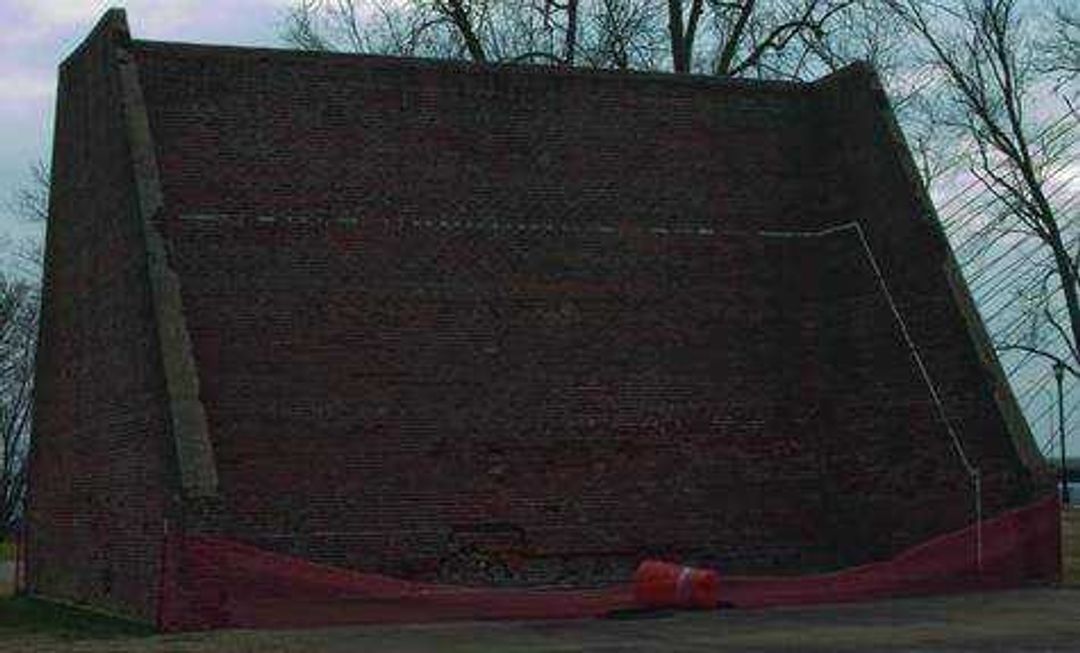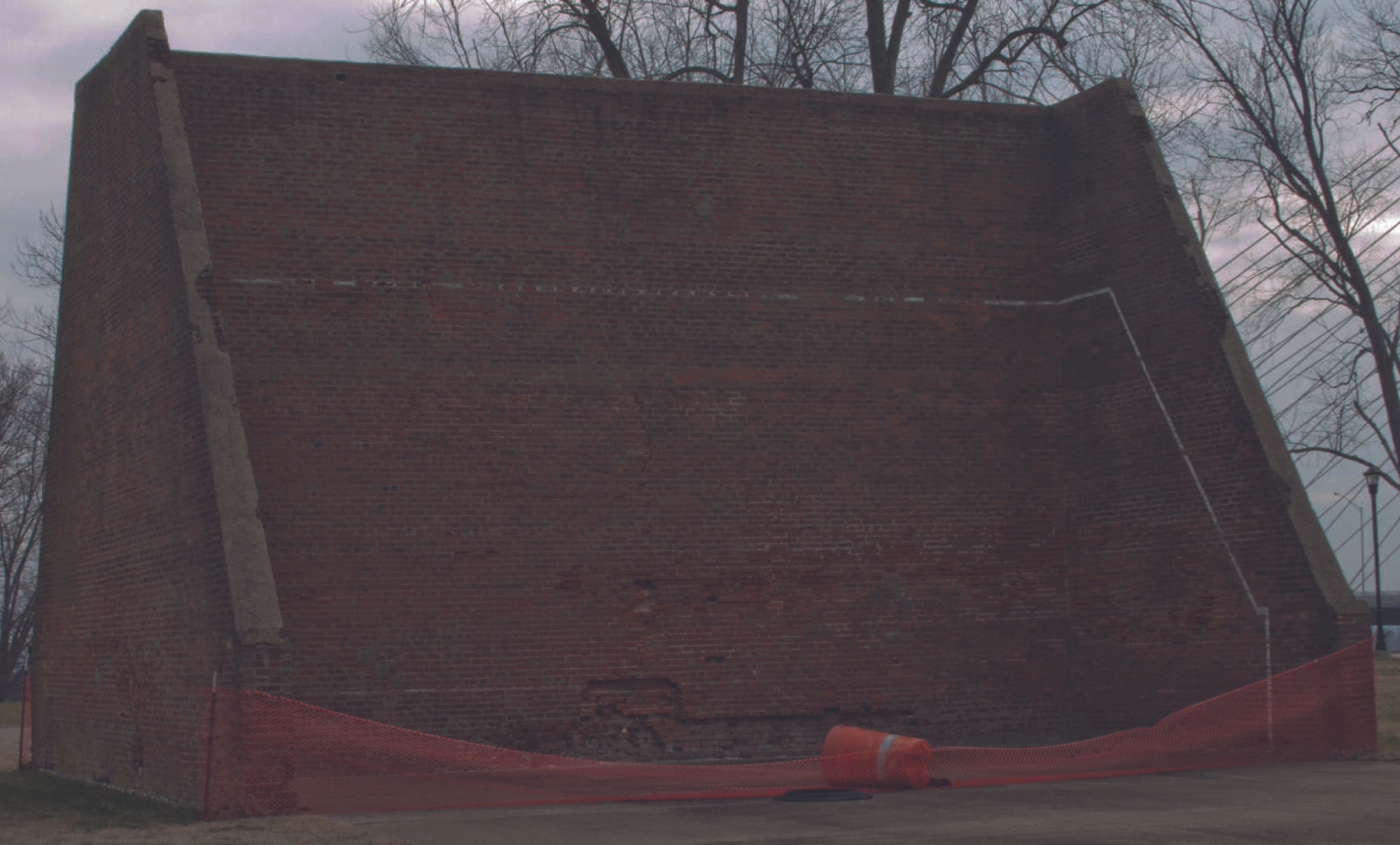Historical handball court set to be torn down by Southeast
The handball court is set to be demolished by Southeast Missouri State University to build a new academic building and residence hall for the River Campus.
People may notice the brick structure by the River Campus located on Morgan Oak Street, but few may realize that it is a part of Cape Girardeau's rich history. The handball court, which is a contributing structure to the federally-protected St. Vincent Academy, may be the oldest standing handball court in the nation.
The handball court is set to be demolished by Southeast Missouri State University to build a new academic building and residence hall for the River Campus.
Kathy Mangels, vice president of Finance and Administration at Southeast, and the Board of Regents announced the approval of plans for the new building in December.

Mangels said that the proposed L-shaped building will run east and west parallel with Morgan Oak Street, and north and south on the same site line as the existing Seminary Building. This means that the handball court's location will be in direct conflict with these plans.
According to history enthusiast and webmaster and blogger at the Southeast Missourian James Baughn, the handball court likely is the first handball court west of the Mississippi. He said that there is another court in San Francisco that was built in 1850, but the court on the River Campus could be as old as 1843.
Baughn said that there were actually two courts. The first one was built in 1843 by Joseph Lansman and another one was built during 1853 after the St. Vincent Academy property was struck by a tornado in 1850. Only one of those courts is still standing on the property today.

According to his research, Baughn said the court still standing is the most likely the one built in 1843. Baughn said the building of the structure and the St. Vincent Academy is historically significant because it was financed by Louis Houck who played a huge role in the establishment of Southeast and was built by Joseph Lansman on land he donated. Lansman is responsible for building many structures around Cape Girardeau area and is known as "the man who built Cape Girardeau."
Baughn feels that, though the court is deteriorating and needs fund to be revamped, it is a worthy cause to try to keep it standing, but it needs money to invested into it.
Mangels said that in October, during a Board of Regents meeting, she hired a structural engineer to analyze the stability of the handball court. She presented these findings to the board and emphasized that the court was determined to "have severe structural issues."
"We found out it couldn't be patched as it is," Mangels said. "That's how we decided it needed to come down. We can't rebuild the structure, and it can't stand as is."
The Board of Regents eventually decided the best way to deal with the situation was to commemorate the bricks, especially the ones with carvings on them, in the new building by using them in the construction of the entrance while including a plaque with the history of both St. Vincent Academy and the handball court.
According to the National Register nomination form by Historic Preservation Services, LLC based in Kansas City, Mo., "the handball court is quite possibly the oldest handball court remaining in the United States ... because of its date of construction and its association with Vincentians, it is possible that a structure's design has an association with French antecedents."
Cape Girardeau city planner Ryan Shrimplin, who also is a member of the Cape Girardeau Historic Preservation Commission, said that Mangels presented the university's plans to demolish the handball court to the commission in December.
Shrimplin said that Mangels pointed out the structural damage like cracks that are causing the mortar to wear out and a hole that is affecting the stability of the structure, making it unfeasible to keep the structure standing.
Shrimplin said Mangels discussed the fact that the handball court was not sound enough to move from the property and reassemble it without losing its historical integrity.
According to Shrimplin, the property on which the handball court is located is state-owned public property, which exempts it from Cape Girardeau zoning laws, and that from a local government's point of view, local laws will always be trumped by state laws.
"They don't have to get approval from the city," Shrimplin said, "They can purchase properties and demolish as they wish. The commission did appreciate that the university took the time to come to the meeting and let us know what was going on. There is some disappointment that the university let the structure get to this point. It appears this handball court has seen better days."
Since the cost of constructing the building is being financed by bonds and not federal grants, the handball court is exempt from the protection the National Historic Register.
Terry C. Foley, a Southeast graduate with a bachelor's degree in historic preservation, is disappointed that Southeast is demolishing another historically significant structure.
Foley, who now owns her own historic preservation consulting business, said that since Southeast is known for having one the few and best undergraduate programs that is endorsed by the National Council of Preservation Education, it is a contradiction that they have been so flippant about knocking down historical structures.
According to Foley, the Southeast has demolished Albert Hall, Charles W. and Helen Russel Boutin House, the Henry S. Moore House, L.B. Houck House, Leming Hall, Werner's CGA Supermarket, Washington School, Willie's Bakery at 1215 Broadway and the previous Howard's Athletic Goods location.
A petition has been started on change.org to save the handball court from being demolished.
Though Southeast has demolished many historical buildings, they are currently renovating the infrastructure of the historically significant Academic Hall, which is set to be finished July 31. The project was funded by bonds and Southeast's website said they wanted to preserve the infrastructure to "honor the history" of the building.
Though they are renovating one historic property, Foley said he feels that the university has shown a pattern of indifference towards preserving historic buildings.
"It is a responsibility and a privilege to own a historic property," Foley said. "Property owners of historic properties should consider themselves a steward of a community's architectural heritage. Southeast is a steward to many historic properties. It would be great if they understood that owning a historic property is a privilege and an honor."
Mangels said Southeast has assigned historic preservation graduate student Melinda Winchester to do a photo documentation of the structure. According to Mangels, Winchester also will write a historical narrative of the structure's historical significance. The academic and residence hall is projected to be built by fall 2014.






